1. Rainbow Peaks of Zhangye Danxia, China
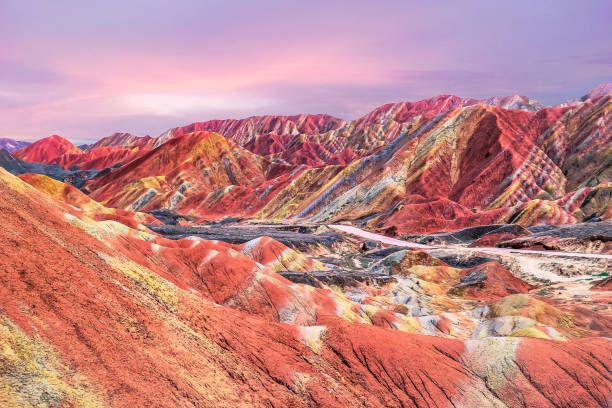
Sometimes nature feels like it’s showing off. In northwest China’s Gansu Province lies Zhangye Danxia Landform Geological Park, a natural wonder of multicolored sandstone mountains. Millions of years of sedimentary rock and mineral deposits have created layers of reds, yellows, blues, and greens that ripple across the hills like brushstrokes on a canvas. These surreal colors are completely natural, caused by the oxidation of iron and other minerals in the rock. Wind and rain later sculpted the peaks into wave-like ridges, making the scene appear hand-painted. Often called the “Rainbow Mountains,” Zhangye Danxia is a UNESCO World Heritage Site and one of China’s most photographed landscapes. It’s hard to believe, but every color and curve you see is real, no filters needed.
2. Grand Prismatic Spring, Yellowstone, USA
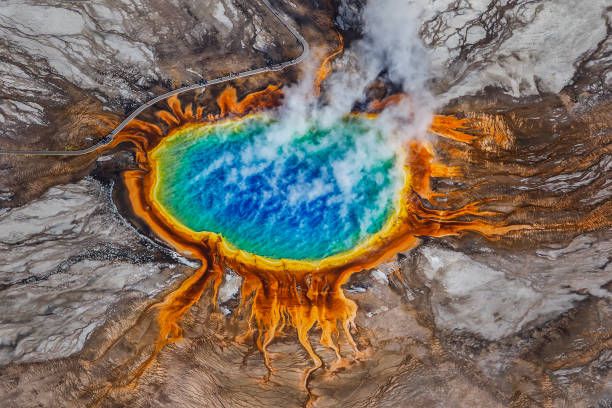
Yellowstone’s Grand Prismatic Spring is so vividly colored it could be mistaken for an abstract painting. Located in Wyoming, it’s the largest hot spring in the U.S., and its vibrant rings, deep blue at the center, surrounded by greens, yellows, and reds, are caused by heat-loving microbes. Each hue represents a specific temperature zone where different microorganisms thrive. The deep blue center is sterile, while the outer rings teem with microbial life. Standing above it feels like hovering over a living rainbow. The intense contrast between steam, color, and the surrounding wilderness creates one of the most photographed sights in Yellowstone. Though it looks otherworldly, this geothermal marvel is a precise reflection of nature’s delicate balance between life, heat, and chemistry.
3. Lake Hillier, Australia

Lake Hillier, on Middle Island off Western Australia’s coast, is famous for its bubblegum-pink hue that looks completely artificial, but isn’t. The color comes from a unique mix of salt-loving algae, halobacteria, and a microbe called Dunaliella salina. These microorganisms produce carotenoid pigments that tint the highly saline water pink. Even when scooped into a bottle, the water keeps its rosy tone, which contrasts beautifully with the surrounding white salt crust and blue ocean. Scientists say the color remains stable year-round, making Lake Hillier one of nature’s most baffling optical spectacles. Though visitors can’t swim here due to conservation limits, aerial views reveal one of the most striking and photographically perfect natural lakes on Earth, like nature’s own Photoshop.
4. Sørvágsvatn Lake, Faroe Islands
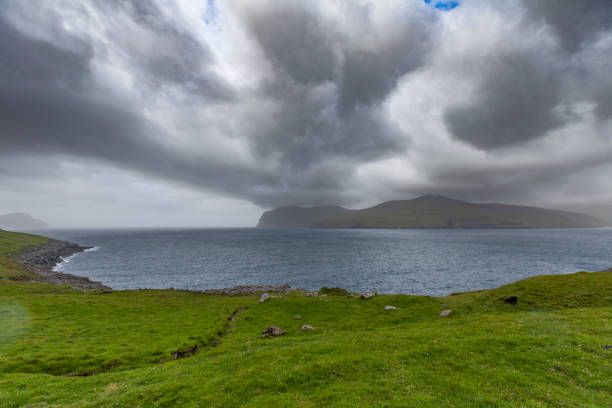
On the remote Faroe Islands, a stunning optical illusion captures travelers’ imaginations. Sørvágsvatn, also called Leitisvatn, appears to hover hundreds of feet above the ocean when viewed from the nearby cliffs. In reality, the lake sits only about 30 meters above sea level, but the perspective from a nearby ridge makes it seem like it’s suspended in midair. This unique effect, combined with the sheer cliffs and Atlantic backdrop, creates one of Europe’s most photographed natural scenes. The illusion is enhanced by the lake’s overflow, Bøsdalafossur Waterfall, which spills dramatically into the sea below. Standing at the viewpoint feels like looking at a fantasy painting, but it’s a reminder that Earth’s beauty sometimes lies in the perfect play of perspective and light.
5. Horsetail Fall, Yosemite, USA
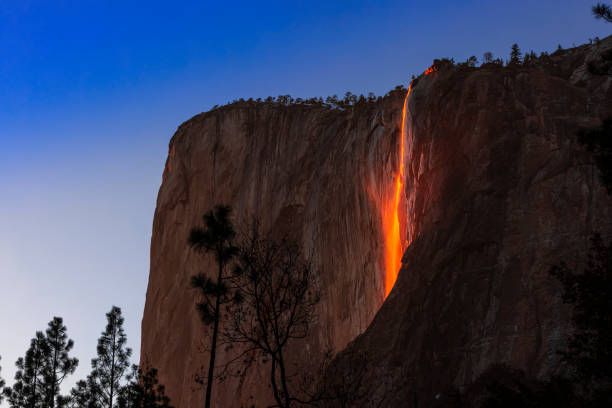
Each February, a rare natural event transforms Yosemite National Park’s Horsetail Fall into a river of fire. Known as the “Firefall,” it happens when the setting sun hits the tiny waterfall at just the right angle, making the cascading water glow with brilliant orange and red hues. The illusion lasts only a few minutes and requires clear skies, enough snowmelt, and precise timing. Photographers from around the world gather to capture this fleeting phenomenon. Despite appearing as if lava is flowing down the granite cliff, it’s pure sunlight and water. The fiery glow of Horsetail Fall perfectly captures how nature can align the simplest elements, light, rock, and water, to create magic that no digital effect could ever imitate.
6. Kawah Ijen Volcano, Indonesia
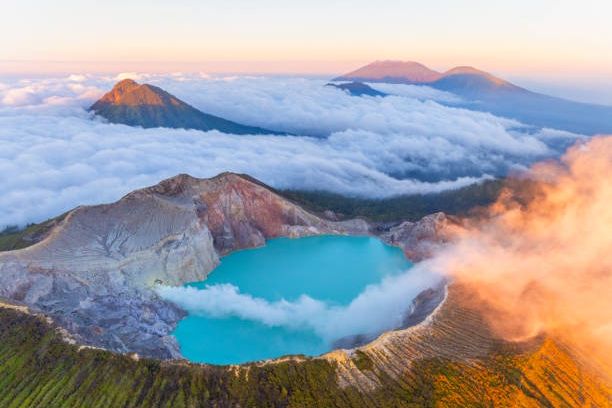
Deep in East Java, Indonesia, Kawah Ijen is a volcano that seems to defy reality. By day, it’s home to the world’s largest acidic crater lake, glowing turquoise from dissolved minerals. By night, the same volcano bursts into ghostly blue flames. The eerie light is caused by sulfuric gases escaping cracks and igniting when exposed to air. These burning gases create electric-blue streams that appear to drip down the crater walls. Miners still work here, extracting sulfur under these glowing plumes, a surreal and dangerous sight. The combination of fire and water, acid and beauty, makes Kawah Ijen one of Earth’s most visually impossible landscapes, a place that looks straight out of science fiction yet is very much real.
7. Cave of the Crystals, Mexico
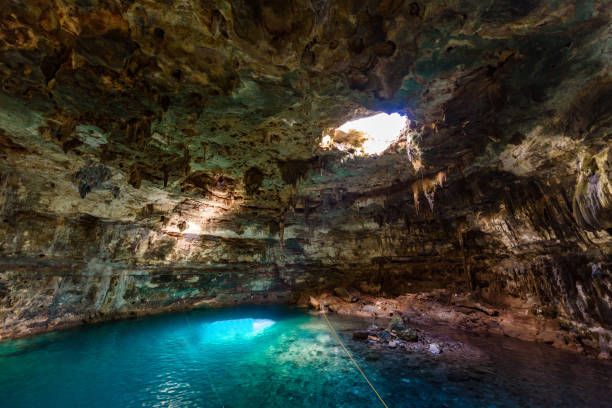
Buried beneath Naica Mountain in Chihuahua, Mexico, lies the Cave of the Crystals, a breathtaking cavern filled with colossal selenite crystals. Some of these translucent pillars reach over 30 feet long and weigh up to 55 tons. Discovered in 2000 during mining operations, the cave’s sauna-like temperature (up to 58°C) and high humidity helped the crystals grow for hundreds of thousands of years. Stepping inside feels like entering Superman’s Fortress of Solitude, with walls glittering in soft white light. Because of the extreme heat, explorers can stay inside for only a few minutes. The Cave of the Crystals is a reminder that some of Earth’s most spectacular wonders form in complete darkness, slowly, silently, and without human intervention.
8. Avatar Mountains, China

The Zhangjiajie National Forest Park in Hunan Province looks like it belongs in another world. Towering sandstone pillars rise through mist-shrouded valleys, their tops capped with lush greenery. These formations inspired the floating Hallelujah Mountains in James Cameron’s Avatar. Formed by millions of years of erosion and weathering, the park’s landscape is made up of more than 3,000 vertical columns, some over 600 feet tall. Morning fog adds to the illusion that the peaks are floating. It’s easy to think the photos are computer-generated, but the sight is completely real. The Zhangjiajie landscape is a masterpiece of time and nature, where wind and rain have sculpted rock into one of the planet’s most cinematic settings.
9. Sossusvlei Dunes, Namibia
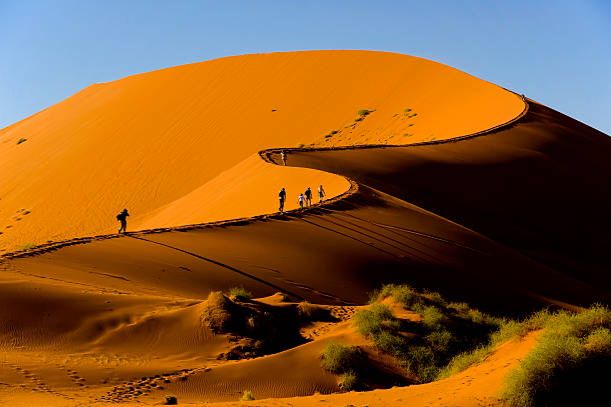
In Namibia’s Namib Desert, Sossusvlei’s massive sand dunes glow like living sculptures. Ranging from pale orange to deep red, the dunes are among the tallest in the world, some rising over 1,000 feet. Their color deepens with age as iron in the sand oxidizes over time. At dawn, the contrasting shadows make the landscape appear painted, while the stark white salt pan below adds another layer of beauty. Dead Vlei, a nearby clay pan with blackened dead trees trapped in white sand, completes the surreal tableau. The result is a striking mix of colors and shapes that seem too artistic to be natural. Yet every line and hue is carved by centuries of desert wind, not a designer’s brush.
10. Dasht-e Lut Desert, Iran

The Dasht-e Lut, or “Lut Desert,” in southeastern Iran looks like the surface of Mars. It’s one of the hottest places on Earth, where temperatures have reached over 159°F (70°C). The landscape is filled with vast salt plains, sand dunes, and rock formations sculpted by relentless wind. The Kaluts, towering ridges of sand and clay, form labyrinth-like structures that stretch for miles. Satellite images show patterns so geometric they seem engineered. Despite the harshness, the desert’s natural textures, salt crusts, and sunset lighting make it one of the most photogenic places on Earth. The Lut’s lifeless perfection proves that beauty doesn’t always require greenery or water, sometimes it’s found in the silent patterns of stone and light.
11. Plitvice Lakes, Croatia
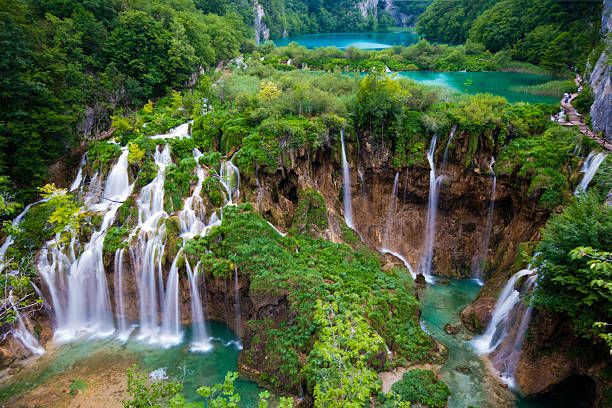
Croatia’s Plitvice Lakes National Park looks like something straight out of a dream. Sixteen turquoise lakes cascade into one another through hundreds of waterfalls, surrounded by emerald forests. What makes it seem unreal is how orderly the natural terraces appear, each lake sitting perfectly at a different level. The vibrant colors come from minerals, algae, and sunlight reflecting off the limestone bottom. Wooden walkways meander above the clear water, allowing visitors to witness the seamless blending of movement and tranquility. Plitvice’s beauty changes with the seasons, from frozen blue in winter to emerald green in summer, but it’s always mesmerizing. The symmetry and purity of the park make it hard to believe such a place exists outside a painting.
12. Salar de Uyuni, Bolivia

Stretching over 10,000 square kilometers, Bolivia’s Salar de Uyuni is the world’s largest salt flat, and one of its most mind-bending landscapes. After rainfall, the flat becomes a perfect mirror, reflecting the sky so precisely that horizon lines disappear. Walking across it feels like stepping into infinity. During the dry season, the surface cracks into hexagonal salt patterns, creating geometric beauty unlike anywhere else. The area also contains islands of cacti and pink flamingo habitats. Salar de Uyuni’s brightness is so intense it’s used to calibrate satellite instruments. Whether under blazing sun or reflective water, it’s one of Earth’s most surreal wonders, proving that simplicity can produce the most breathtaking illusions.
13. Blue Lagoon, Iceland
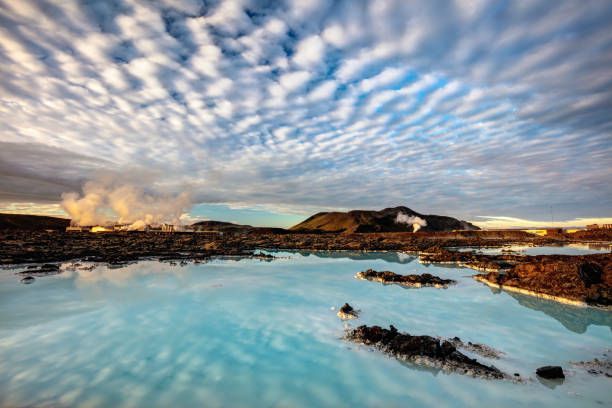
Iceland’s Blue Lagoon appears almost too perfect to be real, a milky-blue geothermal pool surrounded by black lava fields. The color comes from sunlight reflecting off silica and minerals suspended in the water. Though man-made from nearby geothermal runoff, its components are entirely natural. The lagoon’s mineral-rich waters stay around 100°F, making it a warm oasis in the cool Icelandic air. Mist swirls over the surface, while distant mountains frame the horizon. The combination of icy landscape and steaming blue water looks computer-rendered, but it’s genuine. The Blue Lagoon has also become a symbol of sustainable luxury, proving that when technology and nature meet in harmony, the result can be both healing and visually unforgettable.
14. Valle de la Luna, Chile
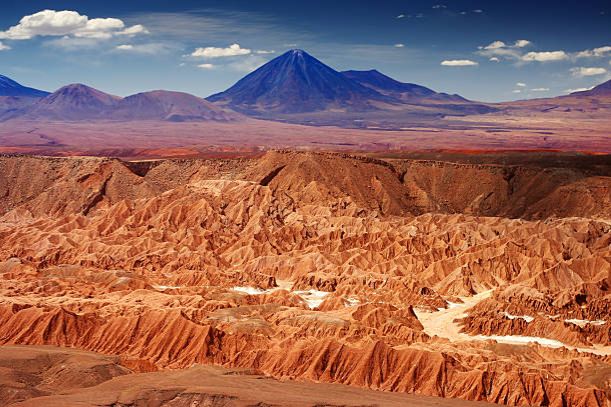
In Chile’s Atacama Desert lies Valle de la Luna, “Valley of the Moon.” Its jagged salt formations, sand dunes, and crimson ridges mimic the barren surface of another planet. NASA scientists even use this area to test Mars rovers because of its extreme dryness and terrain. Sunsets here are breathtaking: golden light transforms the landscape into bands of orange, pink, and purple, creating a painterly illusion. Despite the desert’s emptiness, the beauty of Valle de la Luna lies in its stillness and geometry. Every ridge, dune, and crack has been shaped by centuries of wind erosion. It’s the kind of place where silence has form and where Earth feels truly extraterrestrial, all without leaving our planet.
15. Svartifoss Waterfall, Iceland
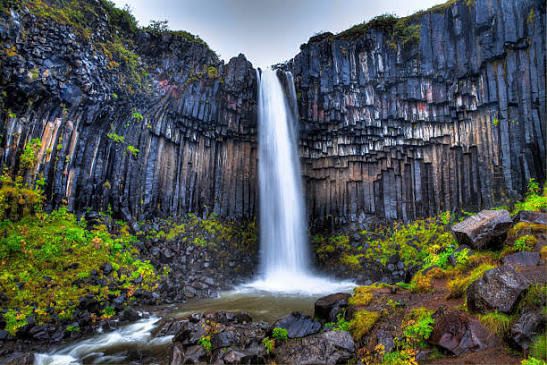
Nicknamed the “Black Falls,” Svartifoss in Iceland is one of the world’s most unique waterfalls. It tumbles gracefully over hexagonal basalt columns formed by ancient volcanic lava flows that cooled into geometric perfection. The stark contrast between the dark columns, white water, and green moss makes it look sculpted rather than natural. This distinctive setting inspired the design of Iceland’s Hallgrímskirkja Church in Reykjavík. In summer, the lush surroundings glow under the midnight sun; in winter, icicles form crystalline curtains around the cascade. Every angle of Svartifoss feels cinematic, proof that geology, given time, can create architecture rivaling human artistry. It’s both serene and powerful, a quiet waterfall framed by nature’s own cathedral.
16. Seven Sisters Cliffs, England
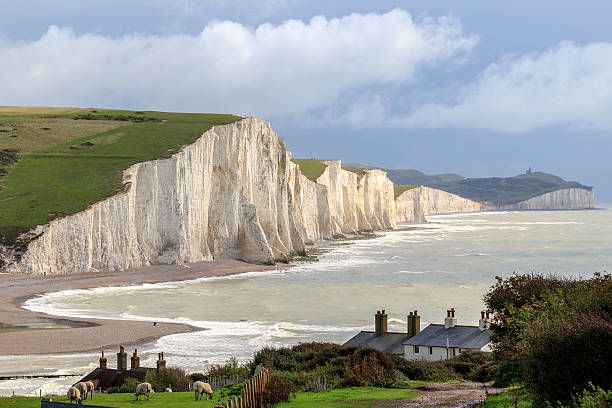
England’s Seven Sisters Cliffs stretch along the Sussex coast, their chalk-white faces gleaming against the turquoise English Channel. From a distance, they look airbrushed, so vivid and sharply edged that they seem digitally enhanced. Formed by millions of years of chalk deposition and sea erosion, the cliffs represent a snapshot of natural history. Their smooth, rolling tops contrast with sheer drops that plunge into the sea below. On sunny days, the combination of green fields, blue water, and white rock creates a painter’s palette of color. The cliffs are constantly changing too, each storm reshaping them slightly. What looks like a postcard-perfect illusion is actually one of Britain’s most honest and enduring natural landmarks.
17. Caño Cristales, Colombia
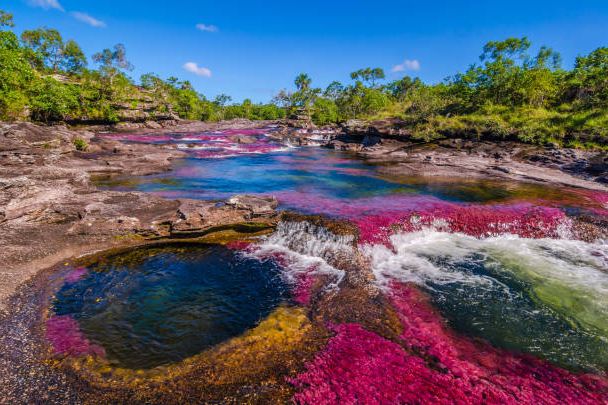
Known as “The River of Five Colors,” Caño Cristales in Colombia turns into a living rainbow from June to November. This phenomenon is caused by aquatic plants called Macarenia clavigera, which flourish beneath clear, shallow water, turning brilliant shades of red, pink, green, yellow, and blue. The effect is completely natural and visible only under specific light and water conditions. Flowing through the Serranía de la Macarena National Park, the river’s clarity makes it appear as though glowing pigments swirl through the rocks. It’s often mistaken for digital art or an oil painting come to life. Yet it’s one of Earth’s most vibrant ecosystems, a fleeting masterpiece that reminds visitors how alive color can be in nature.
18. Trolltunga, Norway

Trolltunga, or “The Troll’s Tongue,” is a dramatic rock ledge jutting horizontally 700 meters above Lake Ringedalsvatnet in Norway. Its name comes from its tongue-like shape and daring position over the fjord. The view from the top is so cinematic it looks like a fantasy movie still. Formed by glacial erosion more than 10,000 years ago, the ledge has become one of Norway’s most photographed hiking destinations. The water below glows deep turquoise, while snow-capped peaks line the horizon. Standing at the edge feels both thrilling and humbling, a moment when nature’s grandeur dwarfs everything human. Despite its surreal setting, Trolltunga is a perfect testament to real-world wilderness beauty and Earth’s raw creative power.
19. Avenue of the Baobabs, Madagascar
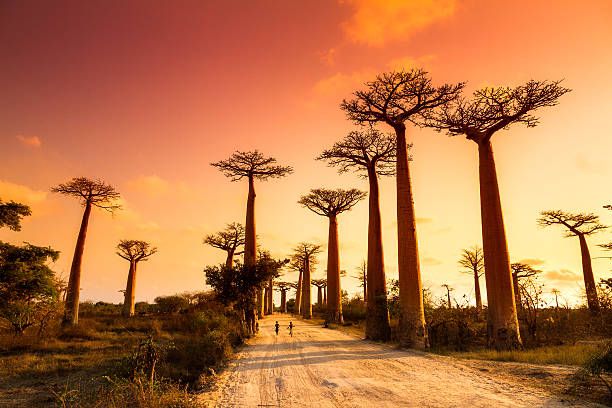
In western Madagascar, towering baobab trees rise like ancient sentinels along a dusty road known as the Avenue of the Baobabs. Some trees are more than 800 years old, their massive trunks storing water for the dry season. At sunrise and sunset, the golden light casts long shadows across the landscape, giving the scene a dreamlike quality. These “upside-down trees,” with their bare branches reaching skyward, look sculpted by imagination rather than nature. Despite their surreal appearance, baobabs are vital to local ecosystems, providing food, shelter, and cultural significance. The Avenue of the Baobabs remains one of Africa’s most hauntingly beautiful and authentic natural sights, where time feels both ancient and eternal.
20. Mount Fuji Reflections, Japan
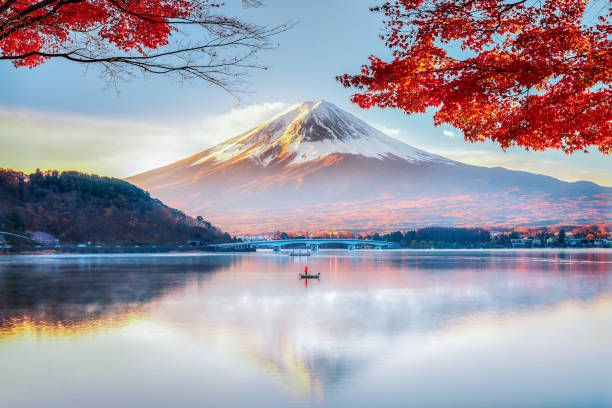
Few scenes are as serene, or as symmetrical, as Mount Fuji reflected in the still waters of Lake Kawaguchi. When the air is calm, the mountain’s snow-capped peak mirrors perfectly on the lake, creating an image so flawless it seems digitally duplicated. This natural reflection has inspired centuries of art and poetry in Japan. Seasonal changes add their own beauty: cherry blossoms in spring, fiery maple leaves in autumn, and glistening snow in winter. The visual balance of sky, mountain, and water evokes a sense of timeless harmony. Though it looks too precise to be natural, it’s entirely real, a peaceful reminder that sometimes the simplest reflections reveal Earth’s most breathtaking illusions.
Visiting even one reminds us that our planet’s most surreal landscapes need no enhancement. Sometimes, the most unbelievable beauty is simply nature being itself.
This story 20 Nature Spots That Look Fake in Photos (But Aren’t) was first published on Daily FETCH


